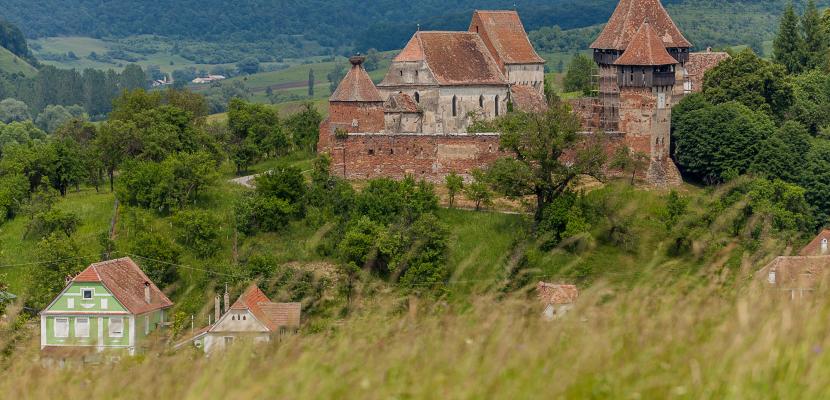
Alma Vii village - a destination for cultural tourism in Transylvania

About this good practice
Implemented by Mihai Eminescu Trust Foundation, with the aim of creating in Alma Vii a model of good practice on local & regional sustainable development, through the restoration and proper interpretation of multiethnic, material and intangible cultural heritage of Transylvania. The project addressed: local needs by creating opportunities for the Romanian and Roma to generate sustainable economic income through valorisation of the existing heritage; regional needs to adequately interpret and present the multi-ethnic (Saxon and Roma) traditional culture in Transylvania to a large public. The Saxon fortification was identified as the most important element of local cultural heritage, that can be valorised and create economic and social opportunities for the community.
Upon completion of the restoration works, the integration of the monument into the life of the community, followed. In the rehabilitated spaces of the fortified precinct, with the help of objects donated by community members, exhibitions were arranged to highlight the local multi-ethnic culture.
In order to generate sustainable economic development and strengthen a community that would become prosperous after the project, regular meetings were held with representatives of the nearly 400 people living in the village. The aim was to increase the feeling of social cohesion and to motivate the inhabitants to work together to improve the living standard in the community, while maintaining their traditional lifestyle.
Expert opinion
Resources needed
The project benefited from a budget of EUR 1.726.252,22.
Evidence of success
A historical monument was restored; a Center for the Interpretation of Traditional Culture has been opened to the public; a Romanian-Norwegian multidisciplinary research in the field of medieval archaeology was carried out; the documentary film "Somewhere, sometime in Transylvania" promotes the project, the village of Alma Vii and the local community; a Heritage Site Management Plan has been developed; a project website, a page on social networks, an interactive guide system were created.
Potential for learning or transfer
This practice is a very good example of how to better support the economic growth of an area by promoting its rich local heritage. The benefits of the implementation of this GP that could be considered for a potential transfer are: strengthening and involving the local community in the sustainable development of the village; making the local community more responsible; the economic and social advantages generated by the existence of the Center for the Interpretation of Traditional Culture; stimulating the practice of traditional crafts, as a source of income, by creating the "Alma Vii" Association; motivating small local businesses to continue and grow their businesses; raising the awareness of the community about the importance of conserving the built heritage and of preserving the overall image of the village and the traditional lifestyle; visitors can discover through a multi-sensory experience the material and intangible multi-ethnic heritage.

